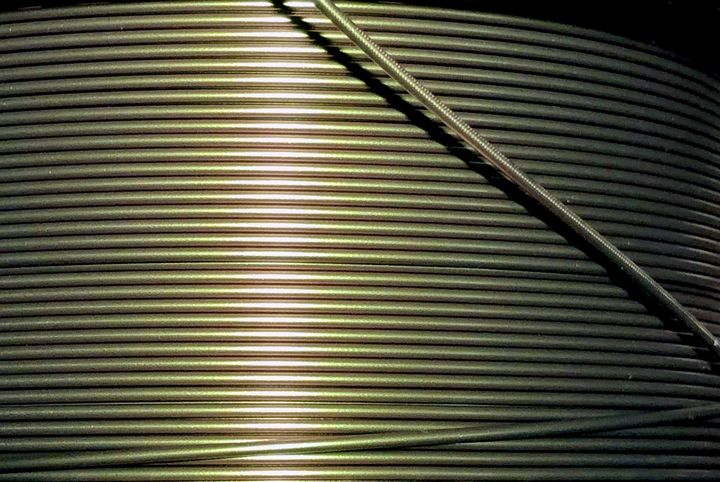
The question of measuring an amount of 3D printer filament seems straightforward, but there’s more to the story.
You might be wondering why this is even a question, as 3D printer filament is almost universally sold by weight. The de facto standard is the ubiquitous 1kg spool, which, along with the 750g spool format, comprises the contents of almost all product shelves.
But in truth it’s actually a lousy measurement standard.
3D Printer Filament Weight
Yes, you will receive exactly 1kg of material on that spool, but you will 3D print varying amounts of objects with it.
How can this be? It’s because the density of the filament differs from material to material. Sometimes the difference is slight, sometimes not; let’s look at the densities of some common 3D printable materials (in grams per cubic centimeter):
- PLA: 1.248
- ABS: 1.052
- PET: 1.333
- PP: 0.861
- PA-12: 1.000
- PEEK: 1.264
As you can plainly see, these vary considerably. A 1kg spool of PLA might have 44% more material (by volume) than a spool of PP. The differences depend on the specific chemical mix of the material.
This difference gets even bigger when you’re looking at composite materials, where a heavier substance is mixed in. For example colorFabb’s CopperFill product, a polymer mixed with fine copper powder that produces metal-like prints, has a density of 3.900 g/cc! A 1kg spool of copperFill would appear to be 4.5X smaller than a 1kg spool of PP.
Imagine your surprise when you receive your order of a 1kg spool of metal-infused 3D printer filament and find the spool absurdly small. However, it would feel like a full kilogram, because it is.
What, then, is the correct way to measure 3D printer filament?
3D Printer Filament Length
A common alternative measurement I’ve seen occasionally is length. Here we will see a filament being sold by the meter. However, this measurement unit is perhaps even more problematic.
The most obvious problem is that there are multiple filament diameters in the marketplace. While the most common diameter is 1.75mm, there are plenty of 2.85mm options as well. In some rare cases you’ll still see the ancient 3.00mm format being sold, usually at a steep discount to shed inventory. There’s also large-format filaments produced by some vendors for increased print speed, with diameters up to 6mm.
As the diameter of the filament changes, so does the amount of material present per unit length. Let’s examine the volume (in cubic centimeters) of 1 meter of filament for each of the following diameters:
- 1.75mm: 2.4
- 2.85mm: 6.4
- 4.50mm: 15.9
- 6.00mm: 28.3
There’s another big problem with measurement by length: it’s completely unintuitive.
What I mean by that is that if you were to look at a spool, would you have any clue as to how many meters remained on it? Even if you had some experience at that you’d by stymied by the varying hub diameters of different spool manufacturers.
Even worse, if looking at a 3D model or actual print, you have no clue how much “length” was used to produce it. At least with weight you have some intuitive notion about how heavy an object might be. There’s no equivalent for length.
Clearly length is not a good way to measure filament, so what is a good approach?
3D Printer Filament Volume
The answer is to measure by volume, not be weight, nor length.
With volume there is some level of intuitiveness in that one can gauge the volume of an object or a visible quantity of filament. It’s also able to overcome the density problem and also the diameter problem.
Volume would seem to be the best possible way to measure 3D printer filament, except for one major challenge.
Almost no one sells filament by volume.
The only one that I’m aware of is Stratasys, which sells its filament cartridges and canisters in “cubic inches”, a measurement scheme that would not resonate outside of the US.
There are a few 3D print slicing programs that report the filament consumed in terms of volume, and that’s a good start.
But what we really need is an industry push by filament manufacturers and sellers to shift to a volume measurement standard. Unfortunately, I have no idea what would motivate them to do so.
